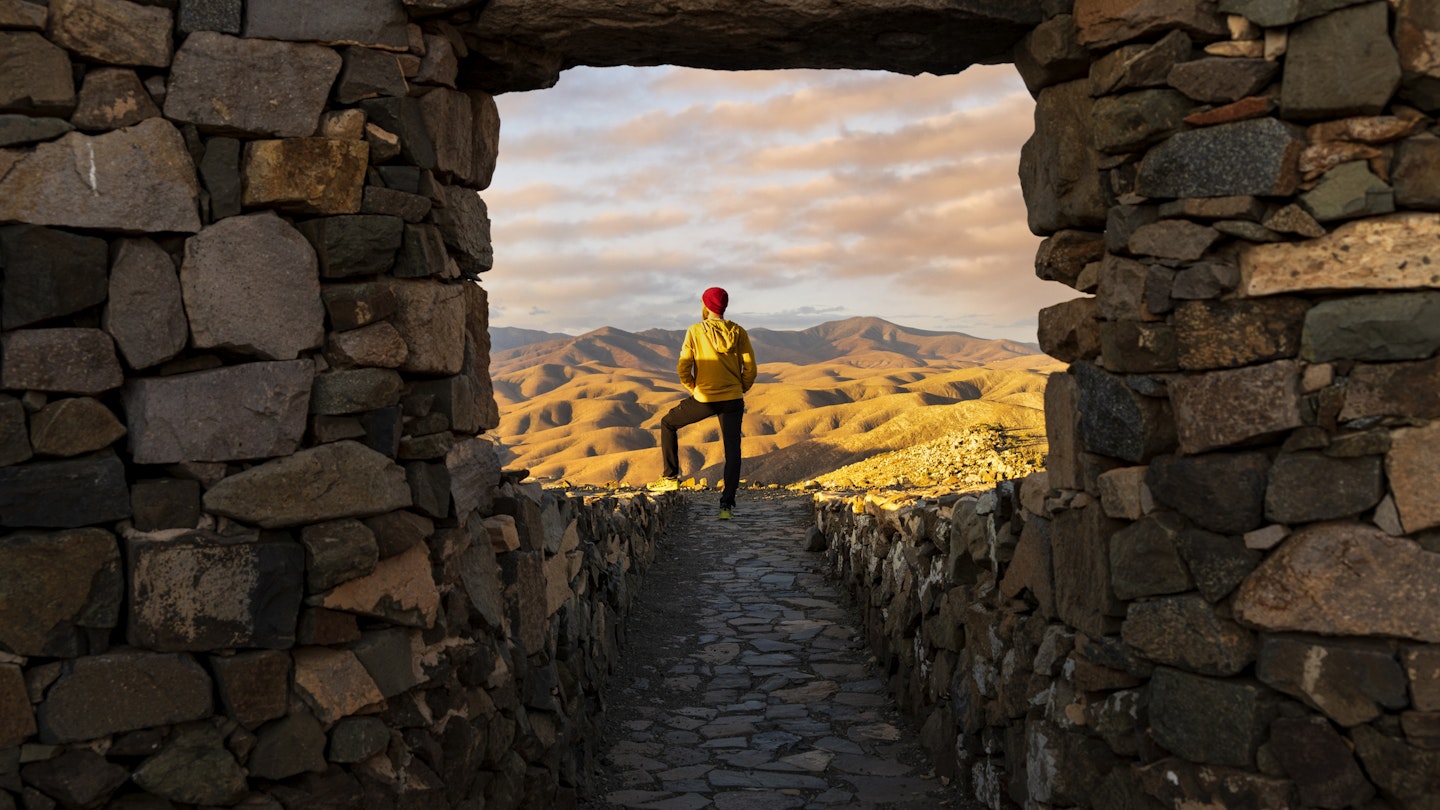May 13, 2024 • 8 min read

Discover the charm of Fuerteventura with our ultimate travel guide, perfect for planning your adventure in this beautiful Canary Island.
When people think of the Canary Islands, sunshine and seaside fun usually spring to mind. This tropical archipelago is renowned for its pristine beaches and stunning volcanic shores. Fuerteventura, often overshadowed by its more popular neighbors like Tenerife and Gran Canaria, stands out as the go-to island for beach lovers. Its coastline is adorned with miles of golden sands that invite relaxation and exploration.
Although Fuerteventura moves at a slower pace, there’s no shortage of excitement here. It is a premier destination for outdoor adventures, encompassing activities such as windsurfing, hiking, and stargazing.
As the second largest and the oldest island in the Canaries, Fuerteventura’s unique landscape features soft volcanic mountains sculpted by time, revealing lush green oases alongside arid desert terrain that is rich in history and geological formations.
When is the Best Time to Visit Fuerteventura?
Thanks to its mild climate, Fuerteventura is a year-round destination, with peak travel periods occurring between November and February when winter sun seekers flock to the island. During these months, expect temperatures of around 20°C (68°F) with plenty of sunshine. The summer months can see temperatures spike to 30°C (86°F), making it ideal for sunbathers.
If you prefer a balance of warmth and fewer crowds, consider visiting during the shoulder seasons of spring or autumn. These months offer pleasant weather for hiking and sightseeing, while still allowing ample opportunities to soak up the sun on the spectacular beaches.

How Long Should You Stay in Fuerteventura?
A week is typically sufficient to explore Fuerteventura’s beaches and attractions. If time is short, renting a car enables convenient access to both the bustling north coast and the serene south.
The northern beaches, such as El Cotillo and Corralejo, are popular with surfers and beachgoers alike. In addition to stunning beaches, Corralejo is known for its majestic sand dunes and vibrant local food scene, offering options for all travelers.
Conversely, the Jandía Peninsula features flat sandy beaches ideal for windsurfing, along with ample resorts that promise comfortable stays.
For visitors with only a day or two, Fuerteventura still has much to offer. Explore the island’s traditional industries such as salt harvesting and cheese making, and discover local museums around the capital city of Puerto del Rosario.
Getting Around Fuerteventura
Fuerteventura has a central airport that accepts both international and domestic flights. Renting a car is the easiest way to navigate the island, with many roads maintained well for pleasant driving experiences. Keep in mind that some attractions may require off-road driving.
Within resort areas, walking and cycling are practical options. Public transportation, including frequent and budget-friendly buses, can also connect you to diverse island destinations. Ferries provide access to Ferry rides to neighboring islands including Lanzarote and Gran Canaria.

Top Activities in Fuerteventura
Explore the Waters
Make the most of Fuerteventura’s beautiful coastline with a variety of water sports. Surfing, stand-up paddle boarding, diving, and kayaking are just a few activities available. Numerous surf schools cater to all skill levels, ensuring a safe and challenging experience on the waves.
Farm Experiences
Fuerteventura has a rich tradition of goat farming and cheese production. Majorero cheese, made from local goats, is celebrated for its flavor and quality. Visitors can tour local farms, partake in cheese-making workshops, and enjoy tastings of this culinary delight.
Beach Visits
Fuerteventura boasts stunning beaches, the most famous being Cofete Beach on the Jandía Peninsula. This secluded paradise offers unspoiled beauty and has been the backdrop for numerous films due to its breathtaking landscapes.
Cultural Experiences
A visit to Betancuria, the historical capital of Fuerteventura, allows travelers to step back in time. This charming town is known for its preserved architecture and informative trails that highlight the island’s history. The local restaurants offer delicious traditional dishes you won’t want to miss.

Personal Favorite Activity in Fuerteventura
Fuerteventura is renowned for its stunning light, which transforms the landscape in a captivating way. I highly recommend watching the sunset from various viewpoints across the island. The FV-605 road, winding towards the Mirador Astronómico de Sicasumbre, offers spectacular vistas, transitioning from rich browns to vibrant pinks as the sun sets.
Budgeting for Fuerteventura
Traveling to Fuerteventura can be economical, especially during off-peak seasons. While cash is rare as debit and credit cards are widely accepted, it’s advisable to carry some Euros for smaller vendors.

Stay Hydrated
Water is a precious resource on the island, so it’s crucial to conserve it. Although tap water is potable, it has a high mineral content that may cause digestive discomfort. Opt for bottled water and remember to stay hydrated, particularly during midday when temperatures can be intense.
Be Aware of Tides
While enjoying Fuerteventura’s beautiful beaches, it’s vital to be mindful of the tides and currents. Certain areas can have strong currents, making swimming hazardous. Always choose beaches with lifeguards present and follow local advice for safe swimming practices.





